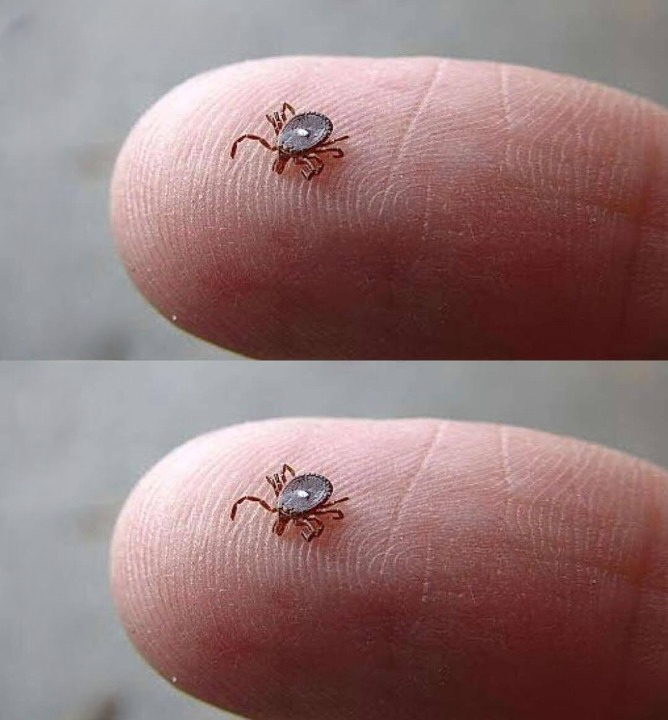Introduction: A Small Bite with a Big Impact
A warm Saturday afternoon can often be the perfect time to relax outdoors, mow the lawn, or enjoy the company of a family pet under a shady tree. Many of us step outside thinking about fresh air, sunshine, and a productive day, never imagining that a nearly invisible insect could completely change the experience. Yet, for many people across the United States, this has become a reality.
That insect is the lone star tick. Unlike many other ticks that prefer to wait quietly on tall grass until a host brushes past, lone star ticks are active hunters. They can sense body heat, carbon dioxide, and movement, which makes them efficient and surprisingly aggressive in seeking out humans and animals. What appears as nothing more than a tiny crawling speck can actually be a carrier of dangerous diseases—and in some cases, even cause lifelong changes to diet and health.
In this comprehensive guide, we’ll explore:
- What makes lone star ticks unique.
- The health risks associated with their bites.
- Proper steps to take if bitten.
- Long-term preventive strategies.
- Ways to protect pets and households.
- Broader environmental and public health perspectives.
By the end, you’ll not only understand why these ticks deserve attention but also learn how to continue enjoying the outdoors without unnecessary fear.
What Is a Lone Star Tick?
The lone star tick (Amblyomma americanum) gets its name from the small white or silvery dot found on the back of the adult female. While tiny in size, these ticks are among the most active and persistent tick species in North America.
Distribution and Habitat
Traditionally, lone star ticks were concentrated in the southeastern and eastern United States. However, in recent decades, their range has expanded northward and westward. Today, they are found from Texas to Maine and as far west as parts of Nebraska. This expansion is partly attributed to changes in climate, wildlife movement, and shifting ecosystems.
Lone star ticks thrive in:
- Grassy backyards.
- Wooded hiking trails.
- Overgrown brush or leaf litter.
- Areas frequented by deer, small mammals, or domestic pets.
Behavior That Sets Them Apart
Unlike other tick species that passively wait on blades of grass, lone star ticks actively seek out hosts. They crawl toward heat and exhaled carbon dioxide, making them more likely to find humans quickly. Their persistence means that outdoor activities—even as simple as gardening—can result in unexpected exposure.
Why Lone Star Ticks Are Concerning
Ticks in general can be unsettling, but lone star ticks pose specific health risks that set them apart.
Tick-Borne Illnesses Linked to Lone Star Ticks
- Ehrlichiosis
- A bacterial infection caused by Ehrlichia chaffeensis.
- Symptoms include fever, chills, headaches, muscle aches, and fatigue.
- Without treatment, complications such as damage to organs may occur.
- Antibiotics, particularly doxycycline, are effective if treatment begins early.
- Tularemia
- A rare but potentially severe bacterial disease.
- Can affect skin, eyes, lungs, and lymph nodes depending on how it enters the body.
- Symptoms may include painful ulcers, swollen lymph nodes, or pneumonia-like illness.
- Southern Tick-Associated Rash Illness (STARI)
- A condition similar to Lyme disease but caused by lone star tick bites.
- Results in a bullseye-like rash, fatigue, headache, and muscle aches.
- Unlike Lyme disease, long-term complications are less understood.
- Alpha-Gal Syndrome (Red Meat Allergy)
- Perhaps the most surprising consequence of a lone star tick bite.
- The bite can trigger an immune reaction against alpha-gal, a sugar molecule found in mammalian meat.
- Victims may develop allergic reactions when eating beef, pork, lamb, or other red meats.
- Reactions can range from hives and gastrointestinal upset to severe anaphylaxis.
The Psychological Impact
Beyond physical illness, many people experience anxiety after discovering a lone star tick. The fear of developing an allergy or infection often leads to hyper-vigilance, frequent health checks, and lifestyle changes. While awareness is crucial, panic can be avoided by knowing proper response steps.
What To Do Immediately After a Lone Star Tick Bite
Quick and calm action makes all the difference in reducing risks.
Step 1: Safe Removal
- Use fine-tipped tweezers.
- Grasp the tick as close to the skin as possible.
- Pull straight out without twisting or crushing.
- Avoid folk remedies such as burning or coating with petroleum jelly, as these may increase the chance of disease transmission.
Step 2: Clean the Site
- Wash the bite area thoroughly with soap and water.
- Apply rubbing alcohol or an antiseptic to reduce infection risk.
Step 3: Save the Tick
- Place the tick in a sealed container or tape it onto a piece of paper.
- Label with the date and location.
- This may help medical professionals identify the species if symptoms appear.
Step 4: Monitor and Document
- Keep a simple log of symptoms for at least two weeks.
- Note any rash, fever, or unusual fatigue.
- Seek medical care promptly if warning signs develop.
Recognizing Symptoms After a Bite
Common Symptoms to Watch For
- Fever, chills, or sweats.
- Fatigue or muscle aches.
- Rash at or around the bite site.
- Digestive issues such as nausea or abdominal cramps.
- Allergic reactions such as swelling, hives, or difficulty breathing.
When to See a Doctor
Immediate medical care is essential if you experience:
- A spreading rash.
- Severe headaches.
- Shortness of breath or swelling after eating red meat.
- Persistent fever or flu-like symptoms.
Long-Term Prevention Strategies
Once you’ve experienced a tick encounter, prevention becomes a priority. Fortunately, there are effective strategies to reduce risk.
1. Protective Clothing
- Wear long-sleeved shirts and long pants.
- Tuck pants into socks or boots.
- Choose light-colored fabrics to spot ticks more easily.
2. Use of Repellents
- Apply DEET or picaridin on exposed skin.
- Treat clothing with permethrin for added protection.
- Reapply repellents according to manufacturer instructions.
3. Yard Maintenance
- Keep grass trimmed short.
- Remove leaf litter and brush piles.
- Create gravel or mulch barriers between lawns and wooded areas.
- Consider professional pest treatments in heavily infested regions.
4. Pet Protection
- Dogs and cats often bring ticks indoors.
- Use veterinarian-recommended tick prevention products.
- Perform thorough tick checks after walks or playtime outdoors.
- Wash pet bedding regularly.
5. Personal Routines
- Shower soon after coming indoors to remove any crawling ticks.
- Perform body checks, especially in hidden areas such as behind ears, under arms, and along the waistline.
Broader Environmental and Public Health Perspectives
The rise in lone star tick encounters is not random. Scientists point to several contributing factors:
- Climate Change
- Warmer winters and longer summers create favorable breeding conditions.
- Expanding tick ranges now include regions that historically had fewer encounters.
- Deer and Wildlife Populations
- White-tailed deer serve as primary hosts for lone star ticks.
- Expanding deer populations increase tick survival and spread.
- Human Lifestyle Changes
- More people are engaging in outdoor activities such as hiking, camping, and gardening.
- Suburban expansion into wooded areas brings humans closer to tick habitats.
Public health experts stress the importance of education and community-level action. Preventive measures such as yard management programs, public awareness campaigns, and pet care initiatives can significantly reduce risk.
Lessons Learned from Real Experiences
Encounters with lone star ticks can be unsettling but also educational. For many individuals, including pet owners and outdoor enthusiasts, these experiences serve as reminders that prevention is easier than treatment.
Key lessons include:
- Always carry tweezers in outdoor first-aid kits.
- Don’t dismiss minor itches or small crawling specks.
- Take tick prevention for pets as seriously as for humans.
- Balance outdoor enjoyment with smart protective habits.
Making Peace with Nature
While it’s natural to feel anxious about ticks, fear should not prevent outdoor enjoyment. The goal is awareness, not avoidance. By equipping yourself with knowledge, using protective measures, and monitoring health, you can confidently engage in outdoor activities.
Instead of seeing nature as a threat, many people find empowerment in learning how to coexist safely. A tick bite can serve as a wake-up call to become more vigilant, more prepared, and more respectful of the interconnectedness of ecosystems.
Key Takeaways
- Lone star ticks are small but aggressive, actively seeking human and animal hosts.
- They can transmit diseases such as ehrlichiosis, tularemia, STARI, and trigger red meat allergies (Alpha-Gal Syndrome).
- Prompt tick removal, cleaning, and documentation are essential steps.
- Preventive strategies include protective clothing, repellents, yard care, and pet management.
- Awareness of symptoms ensures timely medical intervention.
- Climate change and wildlife expansion contribute to rising encounters.
- Knowledge empowers individuals to enjoy outdoor life safely.
Final Thoughts
A lone star tick bite may begin as a minor inconvenience—a faint itch or a tiny speck on the skin—but its potential consequences highlight the importance of vigilance. With practical steps, preventive habits, and medical awareness, you can reduce risks significantly.
Remember:
- Identify the tick quickly.
- Remove it properly with tweezers.
- Clean the bite site thoroughly.
- Save the tick for possible testing.
- Monitor symptoms and seek medical care when needed.
Staying informed allows you to reclaim outdoor adventures—gardening, hiking, camping, or simply enjoying time with your pets—without unnecessary anxiety. Lone star ticks may be determined hunters, but with preparation, you can stay one step ahead.




